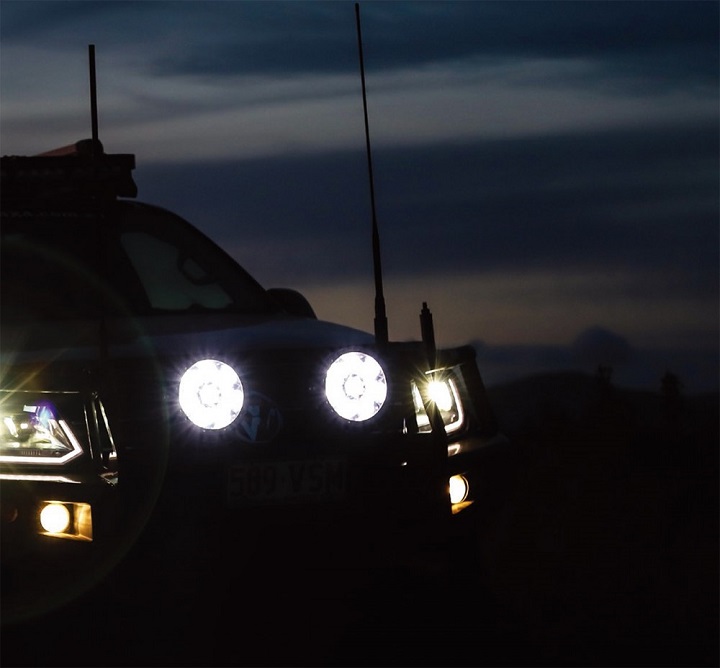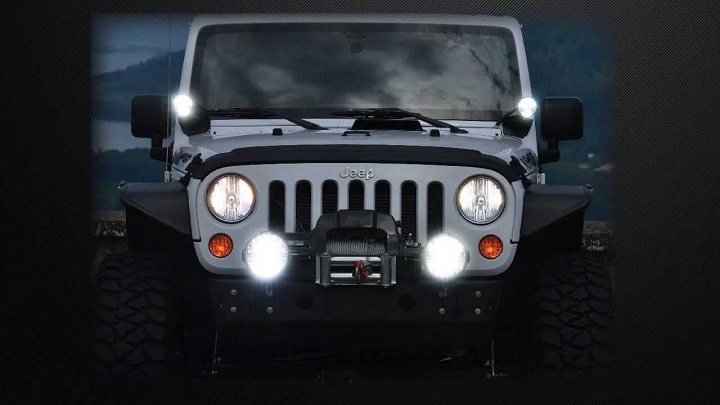The stock headlights in your car or truck may be adequate on paved roads at moderate speeds, especially when combined with streetlights. But throw in complete darkness in the middle of nowhere, or even just a little rain, and you’ll find them woefully inadequate. What will you do about it? Install LED driving lights automotive in your vehicle.
LEDs vs. HIDs
You’ll notice that a lot of the discussion above revolves around the performance of LEDs. This is because the technology is so popular right now that it has taken over the driving-light market. That’s a shame, because while LEDs can do things that HIDs cannot, both are still very relevant to today’s drivers.
“Yes, they’re stylish, but drivers need lights that will make them safer, not just make a fashion statement,” Consumer Reports’ Stockburger explains, adding that the small size and low power draw of LEDs are allowing designers to package them into new shapes and spaces, and that light makers are embracing them for one important reason aside from style: they’re cheap.
When an electrical current passes through a light-emitting diode, it emits light. Because it is entirely electric, it reaches maximum power the moment it is turned on. The current passing between two electrodes inside an HID bulb excites pressurised xenon gas. Because it takes a few seconds for that gas to heat up, HIDs, particularly powerful ones,
An LED has a typical lifespan of 50,000 hours. An HID bulb has a lifespan of approximately 9,000 hours. The former will easily outlast any vehicle to which it is attached. The latter is roughly equivalent to 90,000 miles of use. However, because you are unlikely to drive exclusively at night or on remote tracks with no other drivers, HID bulbs will likely outlast your vehicle as well. While LED driving lights automotive have a longer lifespan, if an LED in a driving light fails, the entire light will most likely need to be replaced. If an HID bulb burns out, it is simply replaced.
LEDs are small, and it takes a lot of them to make a powerful driving light. As a result, designing and manufacturing lenses and reflectors capable of gathering and throwing light over a long distance for each LED is difficult. Because HIDs are so powerful, only one is required to make an effective driving light, requiring only a single lens and reflector. This makes it easier and less expensive for the light manufacturer, allowing many brands to sell lights capable of reaching extraordinary distances at a reasonable price.
What Is Colour Temperature?

The temperature of light, ranging from warm to cool, is used to express its colour. Warm light (red to yellow) penetrates dust, fog, and precipitation with little reflection due to its long wavelengths, but it can impair our ability to distinguish colour. Cool light (blue to violet) can appear very bright, but due to its short wavelengths, it produces glare and reflections and can cause eye strain. What you want is something that is as close to natural daylight as possible in terms of comfort for our eyes, adequate illumination, good contrast, and accurate colour rendering. While it’s common to see both HID and LED lights lean toward the cool side of the spectrum, this is simply because most light manufacturers don’t take the time to dial in accurate colour rendering.
The colour temperature of daylight varies depending on the conditions, but it is commonly thought to be between 5,000 and 6,500 kelvin. In this temperature range, driving lights will not appear yellow or blue, but rather a nice, even white. Driving with lights in this range (or slightly warmer) will improve vision, contrast, and depth perception while decreasing eye fatigue.
The Basics of Lighting Zones

The straight-line distance in front of your vehicle is most likely not the only area you want your driving lights to illuminate. Depending on the terrain and weather conditions, it may be best to light up an area closer to the front of your vehicle, more to its sides, or, if you’re working hard off-road or camping, possibly to the rear as well.
Floodlights illuminate a larger area over a shorter distance—typically a few hundred yards. As a result, they can assist you in seeing potential hazards off to the side of the road or trail, as well as lighting up turns and corners. Floodlights should not be overly bright because they are designed to work at close ranges to your eyes. Floodlights can be packaged as part of an all-around lighting solution, such as a light bar, or they can be designed for a specific zone, such as a fog light. You can improve the visibility of fog lights by increasing their power, running them in a warm colour temperature, and angling them down and out to the sides. Some people also mount small floodlights perpendicular to the direction of travel on the sides of their trucks. These may assist you in navigating difficult terrain or simply illuminate the area surrounding the truck when it comes to a stop.